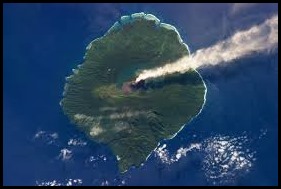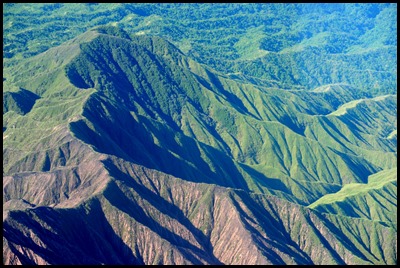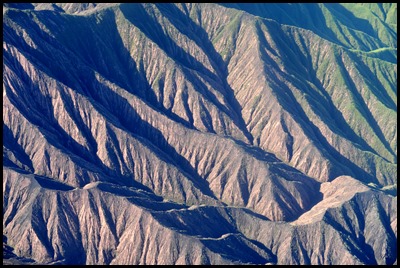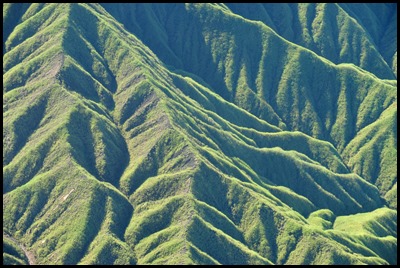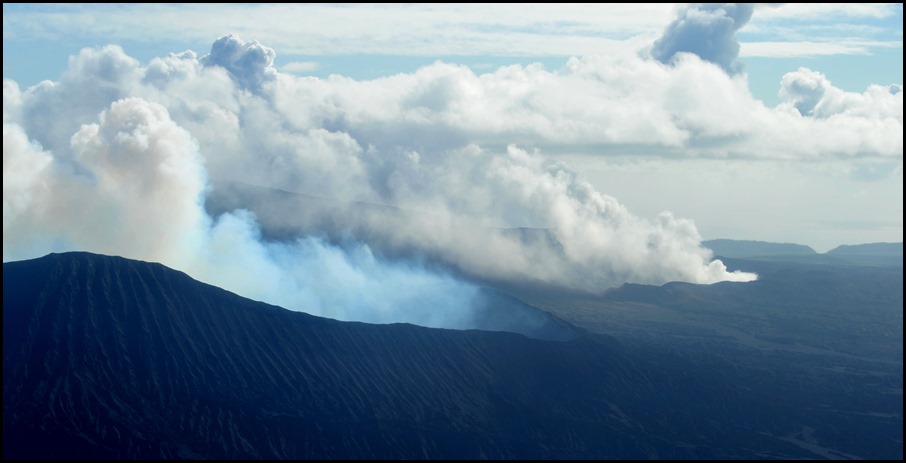Ambrym Volcano

|
Ambrym
Volcano
 A beautiful sight as we flew near
Ambrym
Ambrym is a large basaltic volcano with a twelve
kilometre-wide caldera. It is not only one of the most active volcanoes of
Vanuatu, but also in the world. Ambrym's caldera is a wide, impressive moon-like
landscape containing an ash plain, cut by innumerable erosion gullies and
containing several active craters and recent lava flows. The caldera is believed
to have formed during a major plinian eruption with dacitic pyroclastic flows
about 1900 years ago.
The caldera is the result of a huge plinian explosion,
which took place around 50 AD. Its explosive force is rated 6, the second
highest in the Smithsonian
Institution's Volcanic Explosivity
Index ranks of the largest volcanic explosions in recent
geological history.
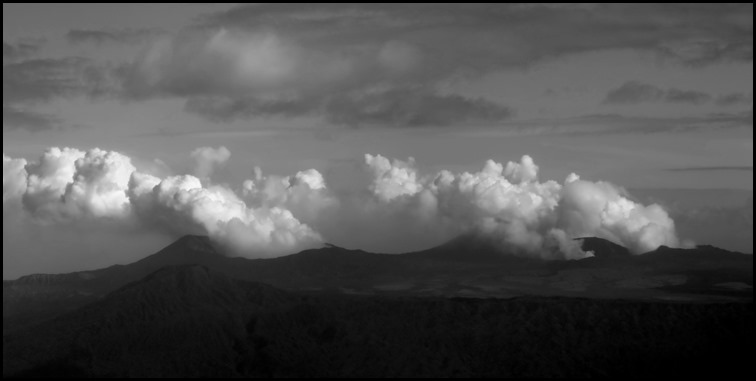 Activity after the caldera formation was concentrated
around two vents that have become large complex craters called Benbow and Marum. Often, both Benbow at 1270 metres and
Marum at 1160 metres (as well as other craters) contain small lava lakes, which
occasionally erupt lava flows onto the caldera floor, or even exit the caldera
through erosion gaps.
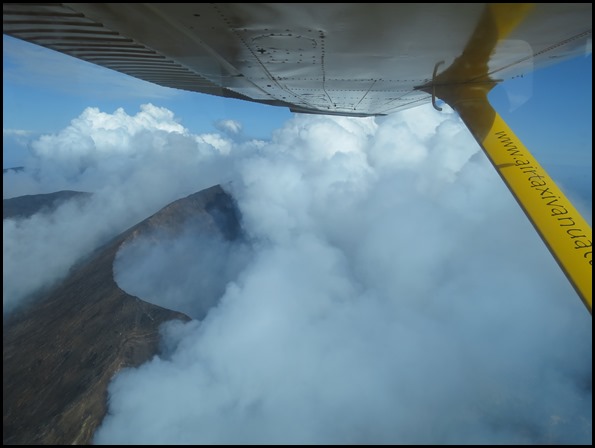 Flying in
closer.
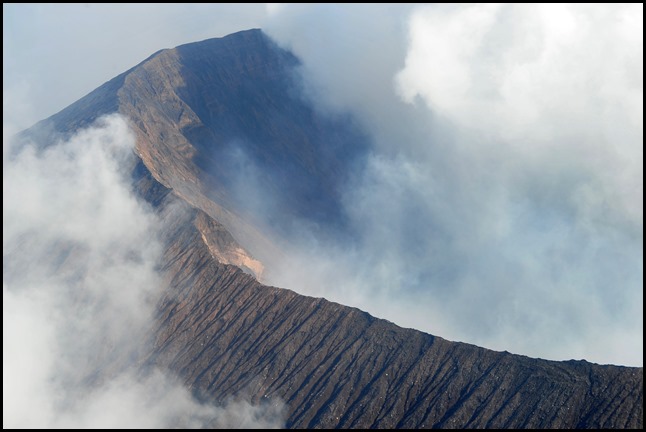 We flew closer to the
edge.
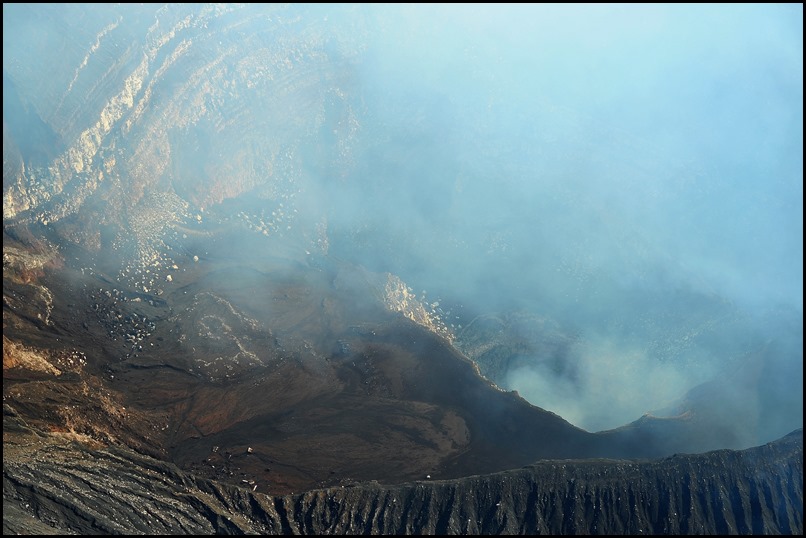 Dave - our
pilot, snuck us a look over the edge of the
caldera.
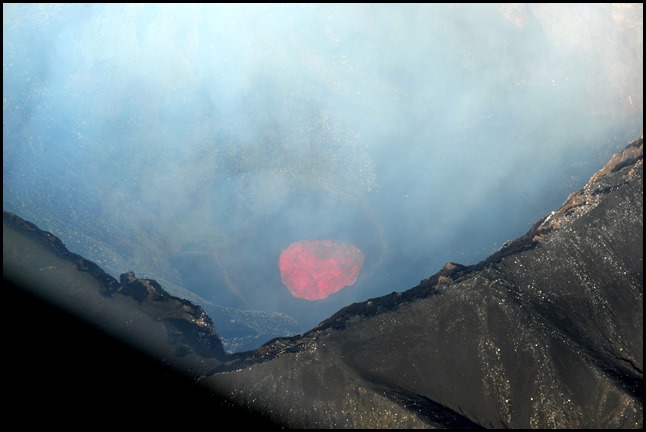 A bit further to see bubbling lava, all three of us said “wow” in unison. The post-caldera eruptions have also formed a series of
scoria cones and maars along a fissure system oriented east-north-east and
west-south-west. Eruptions have occurred frequently during historical time from
cones within the caldera or from flank vents. However, from 1850 to 1950,
reporting was mostly limited to extra-caldera eruptions that would have affected
local populations. Occasionally, explosive eruptions occur from the craters,
mostly because of water-magma interaction. Such eruptions produce tall clouds of
ash, and can cause serious health problems in the local population because the
ash contaminates ground water.
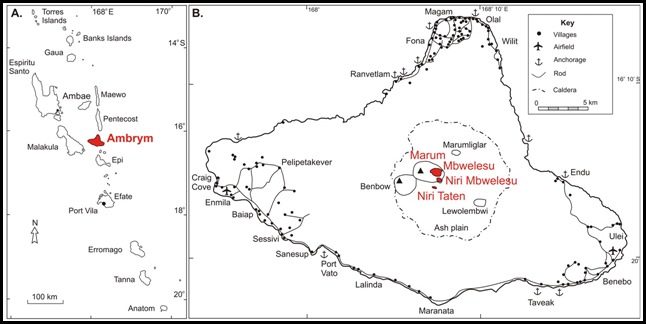 Ambrym volcano eruptions: 1774, possibly in 1820, 1863, possibly in 1870, 1871, 1883, 1884, 1886, 1888, 1894, 1898, 1908, possibly in 1909, 1910, 1912, 1913, 1915, 1929, 1935, 1937, 1938, 1942, 1950, 1952, 1953, 1954, 1955, 1957, 1958, 1960, 1961, 1963, 1964, 1967, 1971, 1972, 1973, twice in 1977, twice in 1979, 1980, 1981, 1983, 1984, 1986, 1988, 1989, 1990, 1994, 1996, 2006, 2008, 2009 to today – ongoing.
Ambrym seen from space – thank you NASA.
The newest lava field. Known locally as “the black island” due to the volcanic ash and the scenery surrounding the volcano.
Sterile to green.
The scenery changed to show the slopes becoming very fertile the further we flew from the caldera.
ALL IN ALL THE PRETTIEST VOLCANO YET POWERFUL, UNIQUE SCENERY |
